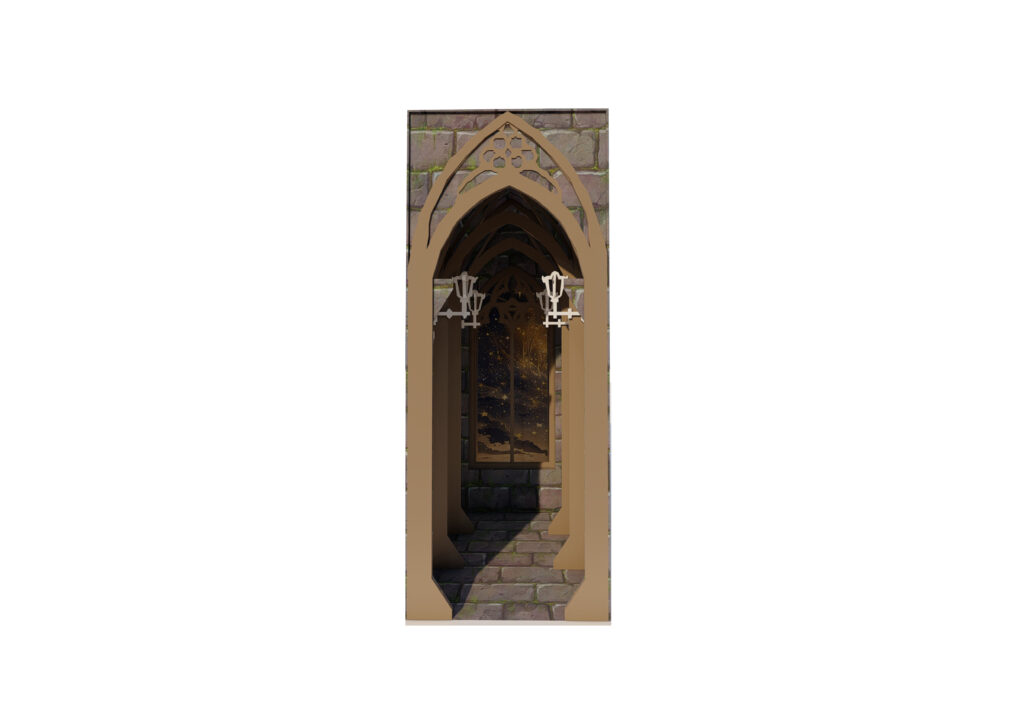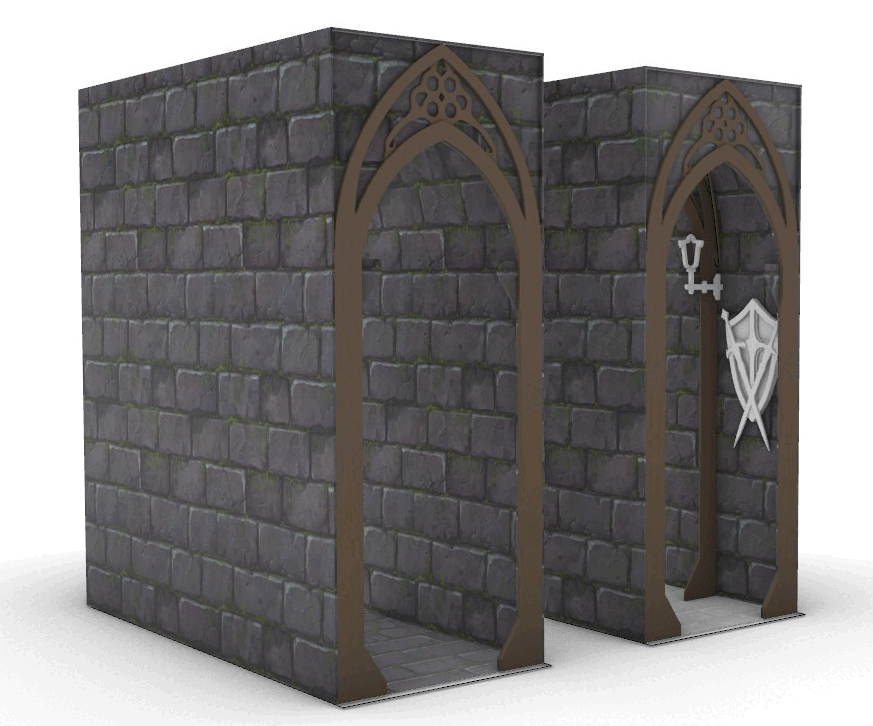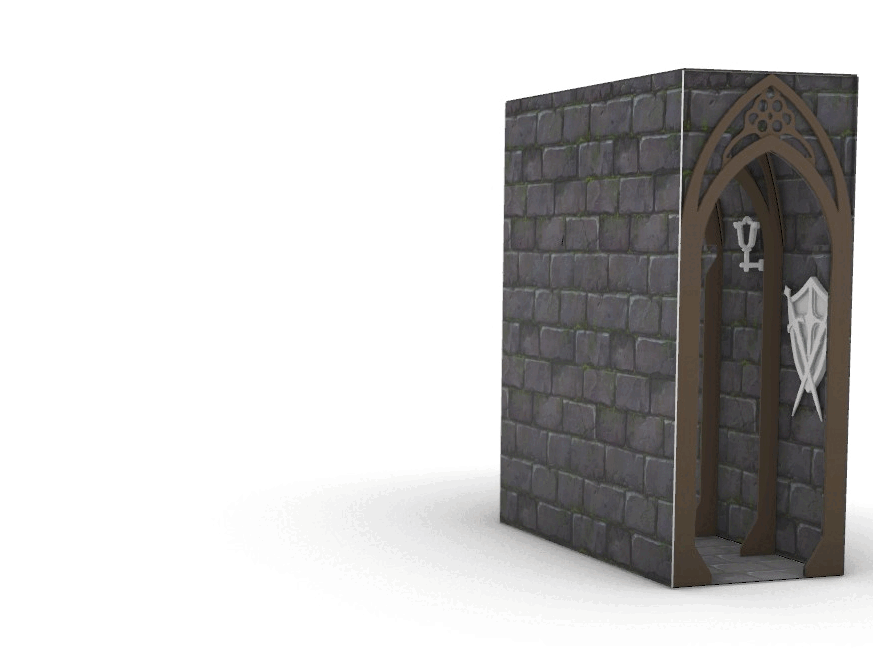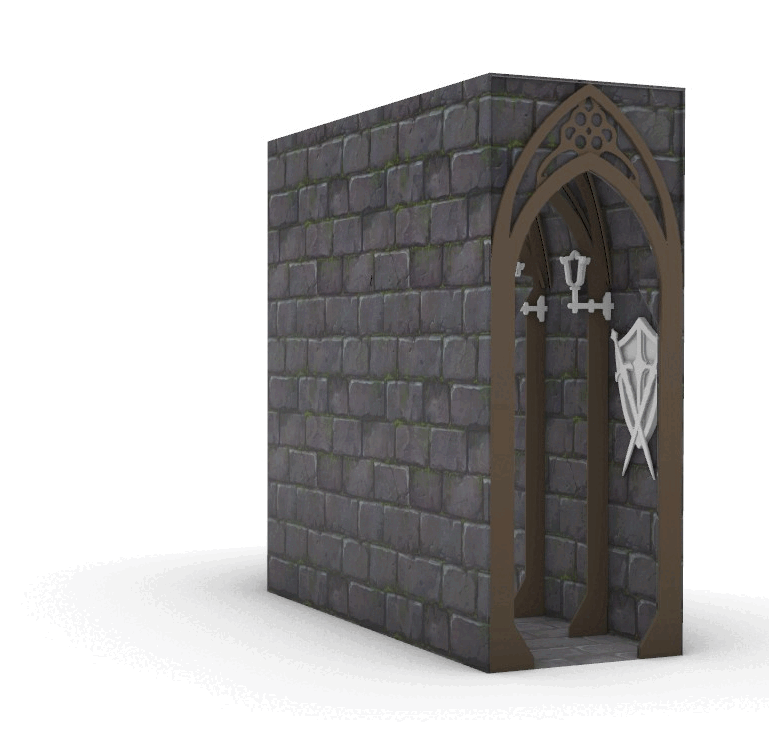Application and Variation
In the third phase, the developed method was applied to a more complex booknook model in order to explore how variations in background, lighting, and architectural detailing influence the overall sense of immersion. The focus was on testing different combinations and evaluating which solutions proved most effective in creating a convincing fantasy atmosphere.
Variations Tested
Backgrounds: rectangular image vs. semi-circular image.
Customizable themes (starry sky, castle, forest) → each variation changes the overall mood


Lighting: absence of lighting vs. LED illumination; warm tones vs. cold tones.

Architectural details: plain walls vs. the addition of columns and decorative elements (runes, shields, torches).
Architectural details: plain walls vs. the addition of columns and decorative elements (runes, shields, torches).
Observations
- The semi-circular background consistently created a stronger depth effect than the flat rectangular version. The curved surface provided a more natural visual transition and gave the impression of an extended space.
- The inclusion of columns and decorative parts significantly enhanced spatial rhythm. Instead of appearing as a simple box, the interior began to resemble a corridor or portal, reinforcing the illusion of entering another world.
- Lighting had a decisive impact on atmosphere. Warm tones conveyed a magical and inviting setting, while cold tones produced a sense of mystery and distance. The presence of lighting in general greatly improved immersion compared to unlit variations.
- Simplified details, inspired by Pinterest references, were chosen to ensure durability and easier cutting. Experience with other booknook kits showed that overly intricate details tend to break easily and complicate assembly.
Discussion
The variations demonstrated that small changes in form and detail strongly affect the user’s perception. The hypothesis was confirmed: careful structural planning, combined with a curved background, architectural rhythm through columns, and strategically applied lighting, leads to a convincing illusion of depth and immersion into a fantasy world. The results also highlighted that balance is essential—details should enrich the space without making assembly overly fragile or complex.
Conclusion
Through this phase, it was concluded that:
- A semi-circular background provides superior immersion compared to a flat one.
- Columns and decorative elements significantly improve spatial rhythm and the impression of architectural depth.
- Lighting defines atmosphere more strongly than textures alone and allows the mood to shift between magical, mysterious, and neutral.
- Customizable backgrounds (sky, castle, forest, galaxy) make the model versatile, enabling the user to adapt the booknook to different moods and contexts.
- Simplification of details is necessary to maintain practicality in assembly and long-term durability.
This confirms that the designed booknook functions not only as a decorative bookshelf accessory but also as a modular, customizable spatial composition, adaptable to different moods and settings depending on background, light, and detailing choices.



